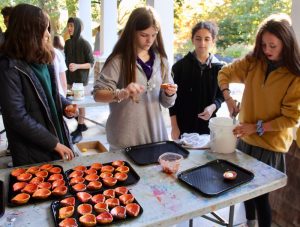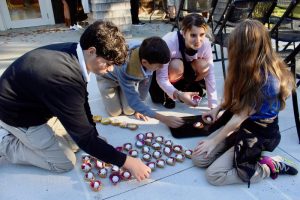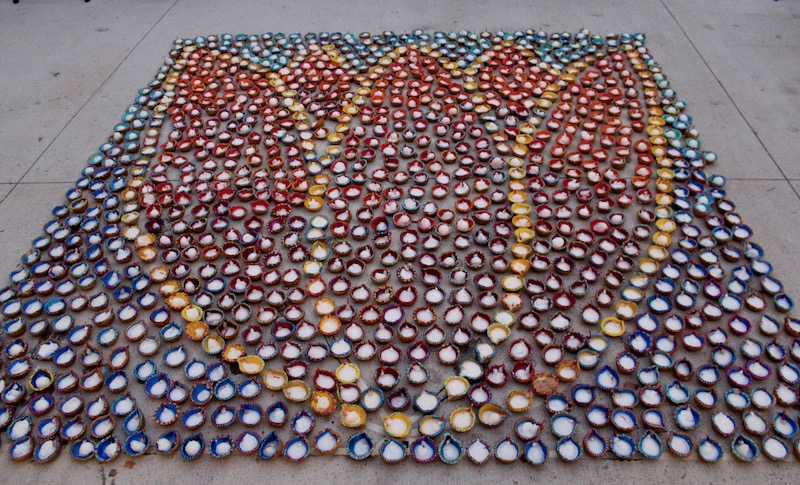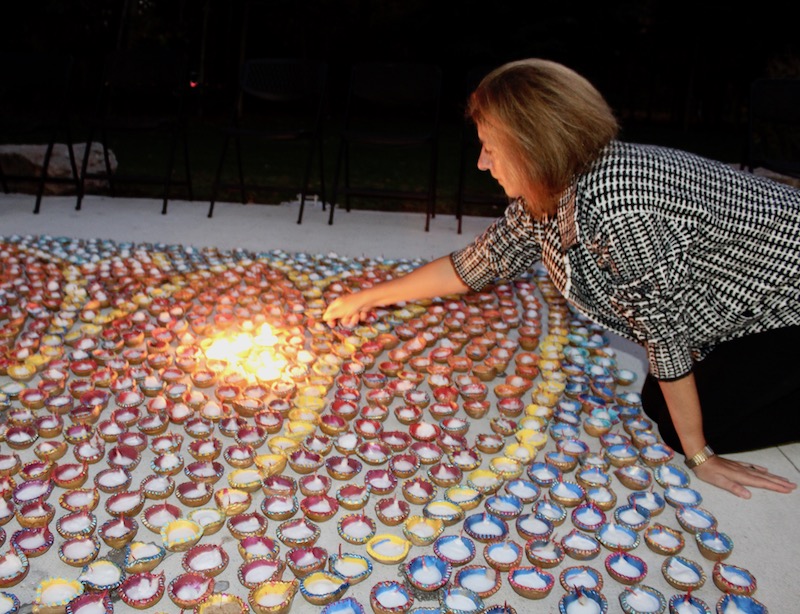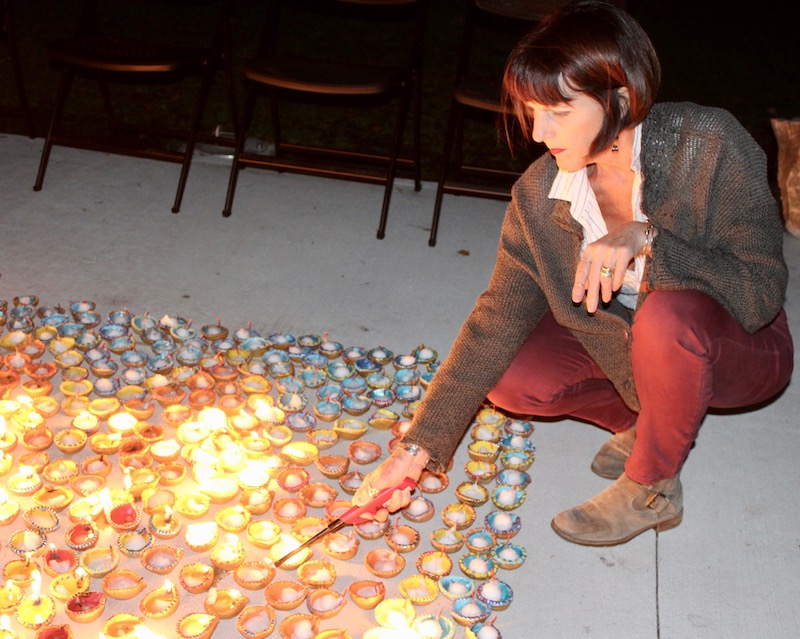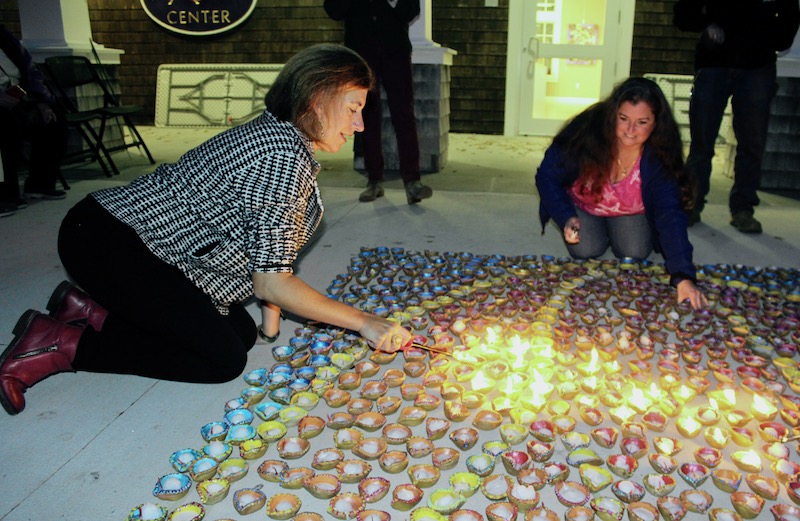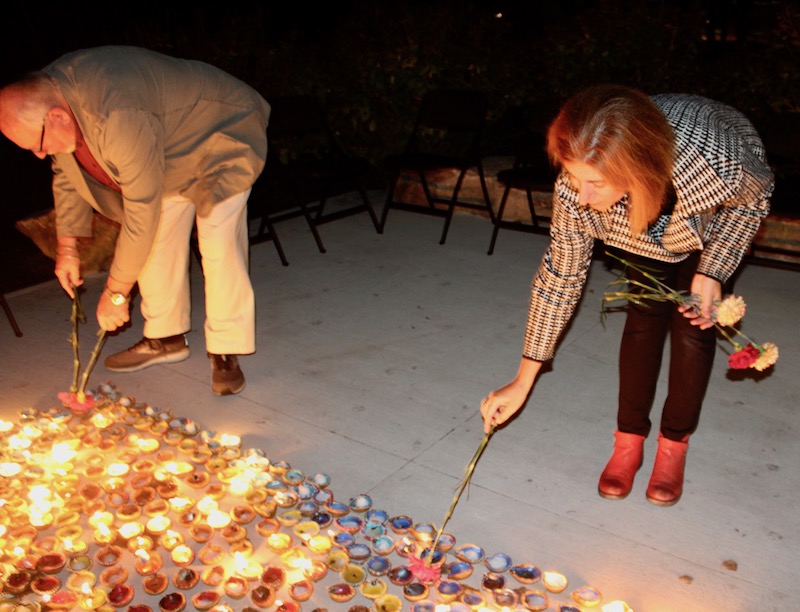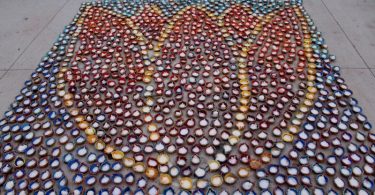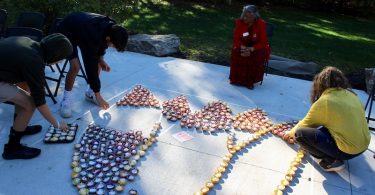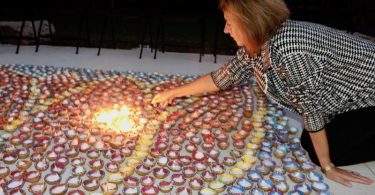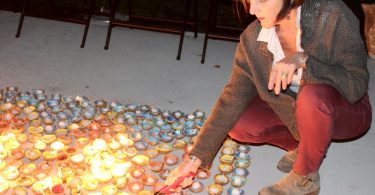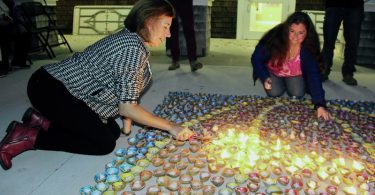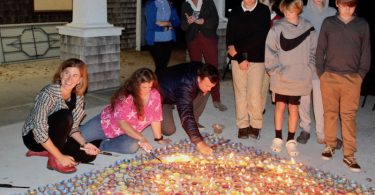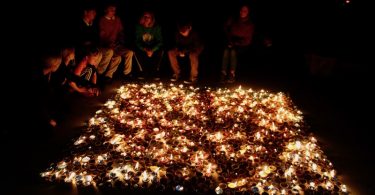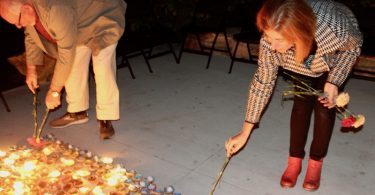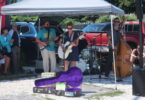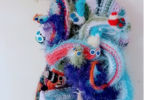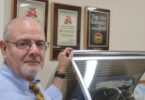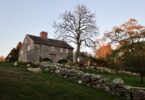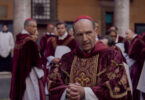FALMOUTH – “These are all great questions.”
That is the answer Tiffany Van Mooy, an art teacher at the Lawrence School, gave when asked earlier this month how and where she intended to light 1,000 diyas made by her seventh grade art students.
The diyas are tiny clay votive candles, traditionally used in the celebration of Diwali, the annual Hindu Festival of Light. As part of learning about other cultures, Van Mooy put together a project in which the students, assembly-line style, formed the 1,000 diyas out of clay. After the clay lanterns were fired in a kiln, the students, again in assembly-line fashion, painted them with brightly colored acrylic paints.
Van Mooy planned to install the candles at Falmouth Art Center but there were many unknowns about how the final stages of the project would come together.
As it turned out, it all came together without a hitch.
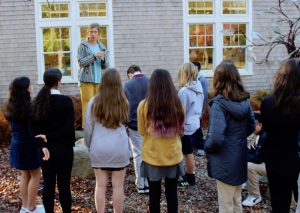
Lawrence School seventh grade art teacher Tiffany Van Mooy talks to her students at Falmouth Art Center before they set up the lotus flower made up of 1,000 divas.
CAPE COD WAVE PHOTO
Van Mooy last week brought the candles over to Falmouth Art Center where she had designed an eight-foot square lotus flower, outlined with tape in the Falmouth Art Center’s Outdoor Classroom.
In three groups, approximately 65 seventh graders walked from school to the Art Center—about a quarter of a mile—last Thursday morning, arriving about 20 to 25 to a group, at 8:30, 9:30 and 10:30am.
Each group filled one-third of the diyas with coconut oil and inserted a wick with lamp oil into the diyas and installed part of the lotus flower designed by Van Mooy.
The students were also treated to a talk about the Diwali customs by Dr. Olivia White, a Falmouth Art Center member who grew up in India.
White explained that she grew up as a Christian in India and so her family did not officially celebrate Diwali. But her family had many Hindu friends and so she was familiar with the customs.
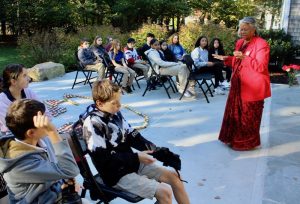
Dr. Olivia White, who is originally from India, explains the Hindu tradition of Diwali to seventh graders gathered at Falmouth Art Center.
CAPE COD WAVE PHOTO
She said that Diwali comes annually after India’s monsoon season and part of the tradition of the holiday is that families clean their homes top to bottom, clearing out the mud from the rainy season.
They light diya candles using coconut oil because the sweet smelling smoke from the coconut oil is thought to purify the air, just as the cleaning rituals purify the home. The custom follows that family and friends are invited to visit. Sweets and toys are exchanged.
By the end of the morning with the final group of seventh graders heading back to school on foot, the giant colorful lotus flower made up of 1,000 diya candles was almost complete. Van Mooy returned later in the day to finish it.
She invited all the students to return with their parents later that night for the lighting of the 1,000 divas of the lotus flower.
At 6pm that night, students and their families began to arrive at Falmouth Art Center with Van Mooy handing out elongated electric lighter sticks to several of the adults to help her light the 1,000 candles.
Lighting the diyas was slow-going but after about 25 minutes and with some last minute assistance by Van Mooy’s husband Ben using a small blow torch, the candles were lit.
About 30 people stood and sat around on the outdoor patio watching the flickering flames that made up the giant lotus flower. Occasionally a light would burn out and a small plume of fragrant coconut oil would rise from the former flame.
Students talked and joked about making the diyas, pointing out which ones they believed they had a part in. The parents encouraged the speculation.
“Which one did you make,” one mother asked pointing at the array of 1,000 candles. “That one,” her son replied, spying a certain design on a candle that he believed he painted.
Another student commented on what a terrific project making the 1,000 diyas was. Van Mooy, overhearing the comment, put her hand to her heart—a joyful moment for a teacher.
The group watched the flames flicker for 45 minutes or so before it was time to end the event.
Van Mooy planned to extinguish the flames in the traditional Hindu method, using flowers. She brought along a dozen long-stemmed carnations and passed them out to several of the adults who snuffed out the tiny diya flames using the large flowers.
The lotus flower made up of 1,000 diyas remains on view to the public in the Outdoor Classroom at Falmouth Art Center for a limited time, in conjunction with an exhibit of artwork in the Art Center’s Hermann Gallery entitled, Festivals of Light. Hundreds of the diyas will then be available for sale to the public for $1 donation apiece to benefit the programs of Falmouth Art Center, a local nonprofit.
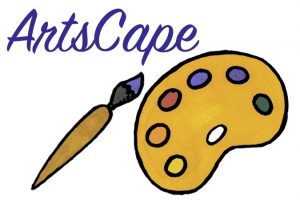 ArtsCape is a Cape Cod Wave column about arts on Cape Cod written by Laura M. Reckford, co-founder of Cape Cod Wave and executive director of the Falmouth Art Center.
ArtsCape is a Cape Cod Wave column about arts on Cape Cod written by Laura M. Reckford, co-founder of Cape Cod Wave and executive director of the Falmouth Art Center.
– Please like us on Facebook.


